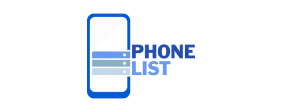Success at work is closely relat to productivity. Productivity, in turn, depends on our physical and mental state. In this article, we will talk about Deep Work, a unique technique that is aim at increasing productivity. We will learn what Deep Work is, study its basic principles, and tell you how to use it to improve productivity. In addition, you will learn how Deep Work workouts help not only maintain mental focus, but also allow you to burn a large number of calories in one session and keep your body in good shape.
Deep Work Philosophy: What is the essence of the technique
In his book “Deep Work: Rules for Focus Success in a Distract World,” the author describes the Deep Work technique in detail. He explains how this method helps improve country email list productivity and achieve success, teaches how to ignore the distractions of the modern world. Newport believes that the technique improves not only the quality of work, but also brings a sense of satisfaction and joy.
The main idea of Deep Work is closely relat to the concept of “work in the flow” . This is a state when a person is completely immers in their activity, losing the sense of time. This leads to increas productivity and creativity. In this state, a person is able to perform complex and creative tasks with high efficiency.
Monk
Your workday should be entirely dicat to your main tasks. Put off mobile usability testing minor tasks to concentrate on the important. An example is writers who write books in solitude, ignoring calls and emails. This helps them create quality works. It is important to be able to say “no” to unexpect tasks. This maintains focus on an important project and increases the efficiency of your work.
Bimodal distribution
This method involves a clear division of time into two modes of work. You select certain days or parts of the day strictly for deep work on complex tasks. The rest of the time is allocat for solving everyday matters, meetings, correspondence.
For example, Monday and Tuesday are entirely dicat to complex america email list projects, and other days are for simpler tasks. Or this way: the morning is allocat for intensive mental work, and the rest of the day is for easy and routine tasks.

